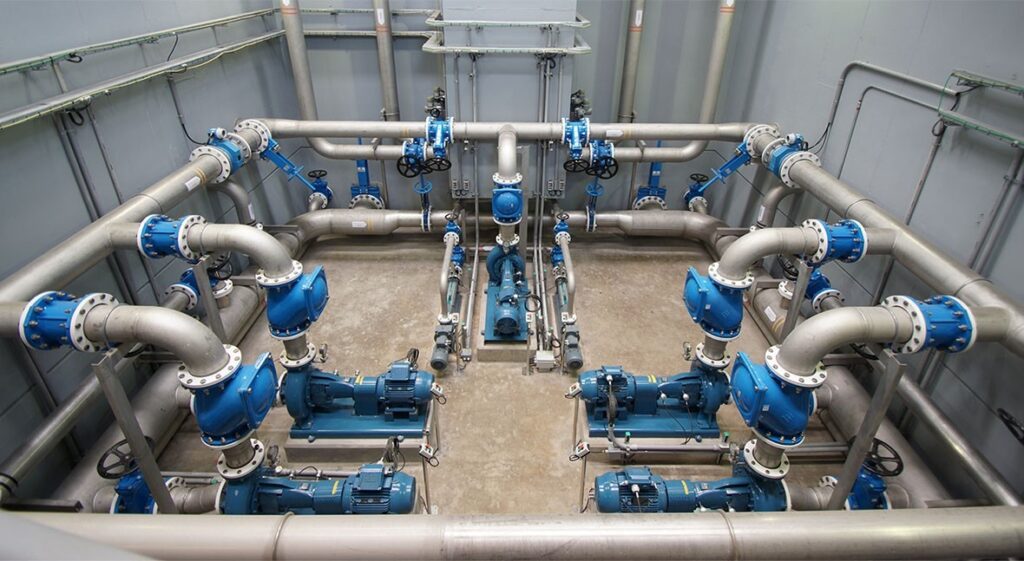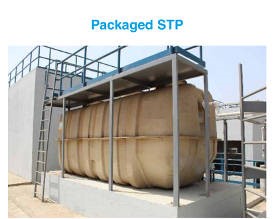
Sewage Treatment Plant I STP
What is a Sewage Treatment Plant?
Sewage treatment plants process and treat wastewater/sewage, breaking it down into a cleaner ‘effluent’ that can be returned back to nature in a safer, eco-friendly form. They help restore groundwater balance, curb diseases and stop degradation and pollution of the environment.
In housing societies, the treated water can be used for non-potable purposes such as gardening, washing cars, construction, irrigation and toilet flushing.
Cleaner water would minimize fatalities due to water borne diseases, there’d be less negative environmental impact from water pollution and from a much narrower point of view, no house would have to pay for water tankers, because there’d be abundance of groundwater on macro scales and reusable water at community levels.
STP Technologies:
◈ MBBR – Moving Bed Bio Reactor
◈ SBR – Sequential Bio Reactor
MBBR: Moving bed biofilm reactor (MBBR) is a biological technology used for wastewater treatment process suitable for municipal and industrial application. Another common name is moving bed film reactor. It was invented in the 1980s. MBBR offer an economical solution for wastewater treatment.
How does MBBR work?
In the MBBR process, feed is sent to an aeration tank, also called a reactor, filled with thousands of small pieces of plastic called carriers or media. These media maximize the surface area as they provide area for microbial growth and are similar in density to water, so they mix well throughout the tank.
SBR: The sequencing batch reactor (SBR) is a fill-and- draw activated sludge system for wastewater treatment. In this system, wastewater is added to a single “batch” reactor, treated to remove undesirable components, and then discharged.
How does MBBR work?
In the SBR process, the operator first fills the tank with influent. Ventilation and microbes then begin to promote biological reactions. After completing this step, purification will take place. That is, sludge will settle. This process is usually done in a separate tank, but in SBR it is done in the same tank that acted as the reactor for the biological process.
After the treatment process is complete, the operator pumps the treated wastewater out of the tank and pumps out the old sludge. This last step in the process is called idling. After reaching this point, the SBR system can start over and re-run a series of sub processes that introduce a new batch of feed into the tank and convert the contaminated wastewater into purified wastewater.
Like many other types of aeration processes, SBR is often part of a larger framework for wastewater treatment. Other steps, such as removing sand grains, can be done in advance, and some steps, such as disinfection, can be continued. In some cases, depending on the quality of the inflow and the desired quality of wastewater, the SBR itself may act as the only means of wastewater treatment.
How does a sewage treatment plant work?

They work in four phases – preliminary, primary, secondary and tertiary treatment.
Preliminary treatment
Removes the biggies like plastic bottles, tree branches, rags, wrappers, solid, coarse objects and materials.
Primary treatment
Occurs inside a sedimentation tank which settles to the bottom all the organic and inorganic solids while the grease, oil and lighter solids are moved to the surface using skimmers. This phase is expected to remove at least 60% of solids (mechanically scraped off and directed to sludge treatment) while the remaining water moves to the next stage.
Secondary treatment
Entails secondary clarifiers separating biological floc from the liquid with the use of aerobic biological processes (through managed indigenous microorganisms that consume biodegradable soluble contaminants). This stage is focused on intensive cleaning of water (up to 90%) after flotsam and solids are cleared in primary treatment.
Tertiary treatment
Is advanced treatment that reduces pathogens, nitrogen, phosphorus and other inorganic compounds by disinfecting the water chemically, through ultraviolet light, or micro filtration, before releasing for reuse. Sludge is treated in digesting tanks with anaerobic bacteria and later used as fertilizer.
Maintenance of STP
Low-budget STPs need frequent emptying and monitoring but even a good one would have to be dislodged and serviced at least once a year. After desludging, it should be immediately refilled by water to balance the internal and external pressure.
Under no circumstances should rainwater enter the STP. It could flush out bacteria and cause flooding.
Emptying of primary tanks and soakaways must be done regularly by the society, not the manufacturer’s service staff.
Below components should be checked during maintenance visits:
· Unobstructed, strong and efficient blower and ventilation
· Mechanical components replacement if needed
· Inspection for air filters and pipes inspection
· Diffuser inspection for bubbles
· Biomass color and smell check
· Final effluent quality
· Damage repair in all chambers
· Lid seal integrity
· Replacement of diaphragms and valve boxes
Refer to the manufacturer’s maintenance guidelines booklet for a detailed understanding of every protocol.
STPs require a CFO (Consent for Operation) from the state pollution boards which have to be renewed every five years. Consent is granted after submitting paperwork, consent fees and a thorough inspection from regional officers of the Board.





